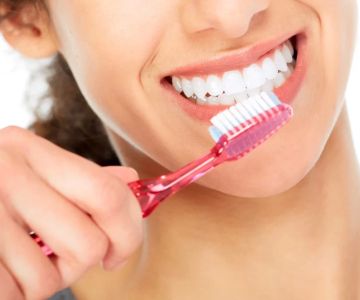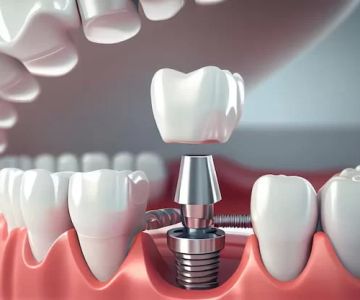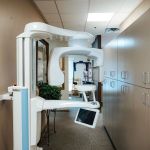- Introduction to the Role of Dental Hygienists
- Advanced Technology in Dental Hygiene
- Benefits of Using Advanced Technology in Dental Hygiene
- Real-World Examples of Technology Use by Dental Hygienists
- Challenges Faced by Dental Hygienists with New Technologies
- The Future of Advanced Technology in Dental Hygiene
Introduction to the Role of Dental Hygienists
Dental hygienists play a vital role in the dental care team. They are responsible for providing preventive dental care, such as cleaning teeth, examining patients for signs of oral diseases, and educating them about maintaining good oral hygiene. With the integration of advanced technology in dental practices, the role of dental hygienists has evolved significantly. Today, they are not only cleaning teeth but also using state-of-the-art tools to enhance patient care, making their work more efficient and precise.
Advanced Technology in Dental Hygiene
Over the past few years, dental hygienists have embraced cutting-edge technologies to improve the quality of care they provide. These technologies include digital x-rays, intraoral cameras, ultrasonic scalers, and laser treatments. Digital x-rays reduce the amount of radiation a patient is exposed to, while intraoral cameras allow hygienists to show patients real-time images of their teeth, improving communication. Ultrasonic scalers help in the effective removal of plaque and tartar, and lasers assist in treating gum diseases with greater precision.
Benefits of Using Advanced Technology in Dental Hygiene
There are numerous benefits for both dental hygienists and patients when advanced technology is utilized in dental practices:
- Increased Efficiency: Technologies like ultrasonic scalers and lasers speed up procedures, reducing the amount of time patients spend in the chair.
- Improved Diagnosis: Intraoral cameras and digital x-rays allow dental hygienists to detect issues early, leading to more accurate diagnoses and treatment plans.
- Better Patient Experience: With clearer images and less invasive treatments, patients are more likely to feel comfortable during their visits.
- Enhanced Precision: Laser treatments, for instance, allow for more precise gum disease treatment, minimizing the need for more invasive procedures later on.
Real-World Examples of Technology Use by Dental Hygienists
In real-world scenarios, dental hygienists are using advanced technology to provide exceptional care. For example, in a modern clinic, a hygienist might use an intraoral camera to show a patient an issue with a filling, which can then be immediately addressed. In another instance, ultrasonic scalers are being used for deep cleaning, significantly reducing the discomfort and time compared to traditional methods.
Moreover, in periodontal therapy, laser technology is making a profound impact by providing less painful treatments for patients while promoting faster healing times. These technologies not only improve patient outcomes but also increase patient satisfaction.
Challenges Faced by Dental Hygienists with New Technologies
Despite the many advantages, there are challenges associated with the use of advanced technology in dental hygiene. The initial cost of purchasing high-tech equipment can be prohibitive for some practices. Additionally, ongoing training is essential to ensure that dental hygienists are proficient in using these new tools effectively. As technology advances rapidly, staying updated with the latest devices and techniques can be a constant challenge for dental professionals.
Furthermore, some patients may be hesitant to embrace new technology, especially if they are not familiar with its benefits. Educating patients about the advantages of new treatments is key to overcoming these barriers.
The Future of Advanced Technology in Dental Hygiene
The future of dental hygiene is bright, with advanced technologies continuing to emerge and revolutionize the field. Artificial intelligence (AI) is expected to play a larger role, from diagnostic tools that can detect oral diseases early to AI-driven patient care recommendations. Robotics may also be integrated into dental hygiene procedures, offering even greater precision in treatments.
As dental hygienists continue to adapt to these innovations, patient care will continue to improve, making dental visits more efficient, accurate, and comfortable. The role of dental hygienists in the adoption and integration of technology will be crucial in shaping the future of dental care.
Conclusion
The integration of advanced technology in dental hygiene has significantly enhanced the role of dental hygienists, allowing them to provide better care, improve patient outcomes, and increase efficiency. As technology continues to evolve, dental hygienists will need to stay current with new tools and techniques. If you're interested in learning more about the latest advancements in dental hygiene or need professional guidance, check out Dentistry Toothtruth for expert advice and services!







 Corona Family Dental Group3.0 (42 review)
Corona Family Dental Group3.0 (42 review) Genesis Dental of Taylorsville4.0 (842 review)
Genesis Dental of Taylorsville4.0 (842 review) Edmond Dental Center: Michael Chandler, DDS5.0 (404 review)
Edmond Dental Center: Michael Chandler, DDS5.0 (404 review) Cash Family Orthodontics4.0 (141 review)
Cash Family Orthodontics4.0 (141 review) Spring View Dental Care4.0 (1298 review)
Spring View Dental Care4.0 (1298 review) Acworth Smiles Dentistry4.0 (145 review)
Acworth Smiles Dentistry4.0 (145 review) The Importance of Oral Health Education During Pregnancy for a Healthy Pregnancy
The Importance of Oral Health Education During Pregnancy for a Healthy Pregnancy Best Tips for Brushing Your Teeth Properly for Healthy Gums: Essential Techniques for Oral Health
Best Tips for Brushing Your Teeth Properly for Healthy Gums: Essential Techniques for Oral Health Why Skipping Dental Checkups Can Lead to Bigger Oral Health Problems
Why Skipping Dental Checkups Can Lead to Bigger Oral Health Problems Advantages of Porcelain Dental Restorations
Advantages of Porcelain Dental Restorations How Can Diabetes Cause Tooth and Gum Problems? Preventing and Managing Oral Health Issues
How Can Diabetes Cause Tooth and Gum Problems? Preventing and Managing Oral Health Issues Healthy Habits for Promoting Good Oral Health and Hygiene: Tips for a Healthy Smile
Healthy Habits for Promoting Good Oral Health and Hygiene: Tips for a Healthy Smile